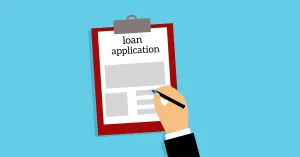Loaning money to friends or family is nothing new, people have been borrowing and lending since the beginning of mankind. However, over the last decade or so, peer-to-peer lending has become about much more than loaning to those we know. It has gone mainstream. Personal investors are teaming up with companies like Lending Club and Prosper to make personal loans to those in need. And though lenders may have their heart in the game as far as helping others, peer-to-peer lending is also one of the ways that lenders make investments and return on their money.
If you are a peer-to-peer lender or have thought about becoming one in a professional capacity by teaming up with a lending company, below are some great tips to keep in mind to make sure you are doing everything right:
1. Research before you invest
Study the loan history of the lending company you’re thinking about working with. Ask questions such as:
- What percentage of loans fall into default?
- How are borrowers screened and evaluated?
- What average returns have investors produced in the past?
- What’s the process for handling late payments?
Don’t cut corners when studying the track record of the company’s investment history.
It’s important to remember that not all lending platforms are the same and they all follow different business practices. Different lending platforms will have different procedures for screening, late payments, and defaults.
Look to investors who have had success with P2P lending and learn from both their mistakes and their triumphs. Use free lending tips on websites such as Lending Academy or Lending Memo to learn from people with practical, everyday experience with P2P lending practices.
Remember, if you feel like you don’t have the answers yet, don’t get started.
2. Start slow
If you’re just getting started with P2P lending as an investment tool, take it slow. Reading and research are great, but there is no better teacher than the first-hand experience.
Don’t feel like you need to rush into the market and loan large amounts of money. Take advantage of the opportunity to lend smaller amounts, even $25 per loan. Having a smaller amount invested at the beginning will give you time to understand your lending platform and prevent yourself from making costly mistakes.
If you take too much on too soon, before you really understand the mechanics of P2P lending, you might start to feel overwhelmed.
“P2P lending is not passive. You need to spend time finding new loans to invest in. If you don’t have time, then start small and see if P2P lending is a good fit for you,” suggested Joe Udo, Editor-In-Chief at RetireBy40.org, in a recent article.
3. Know your risk tolerance
Everyone has a risk level they’re comfortable with. You need to know yours before you begin investing.
As with all investments, the higher risk usually equals a higher reward. Lending to a low-grade borrower will bring in potentially higher yields but greater risk than lending to a high-grade borrower.
“Think carefully about how much risk you are prepared to take, bearing in mind that you could lose the whole of your investment in a loan if it defaults,” wrote Graeme Marshall, CEO of FundingKnight.
4. Diversify your loans
Diversification, diversification, diversification.
If you want to minimize the risk of defaults and protect your investments, aim to hold at least 500 notes. This is easy to do if you invest your money in loans with balances of only $25 to $50 per loan. If your money is diversified across hundreds or thousands of loans, your profits are likely to be higher than your defaults.
5. Reinvest your returns
Don’t necessarily cash out your P2P returns the moment you’re able. Take advantage of the compounding yields by continually reinvesting your returns into new loans.
Alternatively, give yourself a “guaranteed return” by using your P2P returns to repay one of your own debts, like your mortgage or a student loan.
6. Use automation to reinvest
Keeping your principal and interest fully invested is the best way to make the most of your investments. If you have to make a decision about every $25 balance manually, P2P lending won’t be worth your time. Without automation, it’s a hassle to keep every bit of money constantly reinvested.
Make use of automation, and let the lending platforms do the dirty work for you.
7. Keep a strong emergency fund
Before you become a P2P lender, make sure that you have a strong emergency fund that can cover your own personal expenses. You won’t able to withdraw money from the P2P platform on a whim.
Know the game
Investing with P2P lending platforms is a fairly straightforward process, but you need to take reasonable precautions like the ones outlined above.
Follow these tips, keep learning everything you can, and never take on more risk than you know you can handle.





















One comment
Pingback:
SBA Website Is a Great Resource for Lenders - MoneyThumb